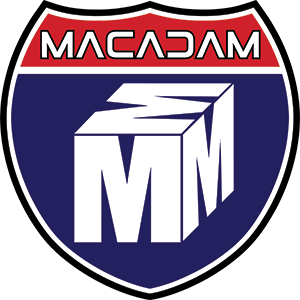High traffic, environmental stressors, or other damaging elements will cause your concrete surface to degrade over time. Whether there are structural repairs needed or just cosmetic fixes, concrete resurfacing can restore your facility to a like-new condition, improving the appearance and safety of your parking lot.
Concrete Resurfacing
When is it Necessary?
Concrete resurfacing can mitigate a variety of issues you may encounter with your surface.
Surface damage is inevitable over time, as wear and tear from normal use with break down the surface. You may notice cracks, chips, holes, or other damage as a result of traffic from vehicles or other machinery, accidental damage, or environmental damage. These can range from small and unsightly to large and potentially hazardous.
Safety concerns are another major reason to install a new concrete surface, as uneven or slippery surfaces can put users at risk of slips, trips, or other accidents.
Energy efficiency can also play a role at some facilities, as the color of the surface (dark or light) will affect its surface temperature and the amount of sunlight it reflects. Both of these factors can influence the temperature of nearby buildings, either reducing or increasing the need for heating and cooling.
Cosmetic concerns can also be addressed with this process. Even if the facility is fully structurally safe, it can appear weathered or dated over time. Resurfacing will improve the appearance by making it look new, or even change it altogether if you choose to customize the look of your new surface.
How it Works
Repairing or renewing an existing concrete surface can be done in just a few steps and the end result will be sure to leave a lasting impression on your visitors.
1. Preparation. First, we start by preparing the existing concrete surface by thoroughly cleaning to remove any dirt or debris. If needed, the old surface will be etched to allow the new layer of material to adhere properly.
2. Priming. Depending on the needs of the surface, after cleaning it may be necessary to apply a primer to help the new layer of concrete bond with the surface.
3. Pouring. Now that the surface has been prepped, the new concrete material can be mixed and poured, then spread evenly with a trowel to create a smooth, even surface. During this step, it is possible to customize your surface with different patterns or textures.
4. Curing. Now that the new layer has been applied, it will need several days to cure before it can be used. Curing time can vary depending on weather conditions or thickness of the new layer. Usually, the surface will be covered with a curing compound or plastic sheeting to help it cure properly.
Now, you can enjoy your new surface for years to come.
Request a Free Quote
Contact us today for a free estimate on your project. Our friendly, experienced staff look forward to helping you plan out your concrete resurfacing project.


